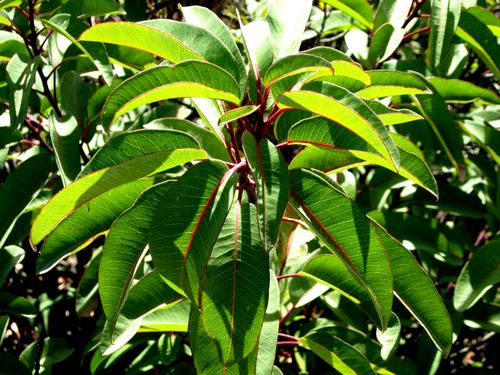
The Anacardiaceae, or Cashew Family, has the following characteristics:
- Leaves: Typically alternate, rarely opposite. Usually pinnately compound, sometimes trifoliate.
- Resin Ducts: produce aromatic compounds.
- Inflorescence: Flowers are often arranged in panicles or spikes.
- Flowers: Regular, bisexual, and usually small. Sepals and petals are usually five in number.
- Fruit: Drupe, which is a fleshy fruit with a single seed enclosed by a hard endocarp.
- Toxicity: Some members of the family produce oils that can cause skin irritation. An example is the presence of urushiol in poison ivy, poison oak, and poison sumac.
- Importance to Humans: Many important food plants belong to this family, including cashew (Anacardium occidentale), pistachio (Pistacia vera), and mango (Mangifera indica).
- Distribution: The family is widespread and found in tropical and subtropical regions.
- Genera: California genera in the Anacardiaceae family include Malosma, Rhus, Pistacia, and Toxicodendron.
- Growth forms: The family is diverse, containing trees, perennial herbs, and shrubs.